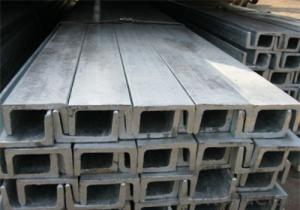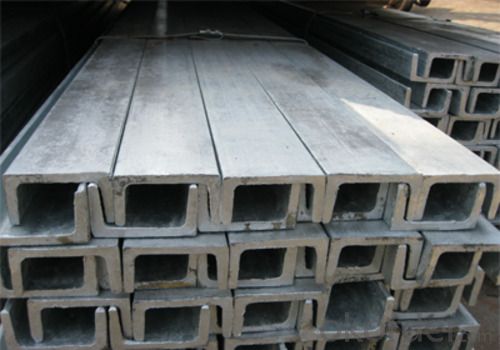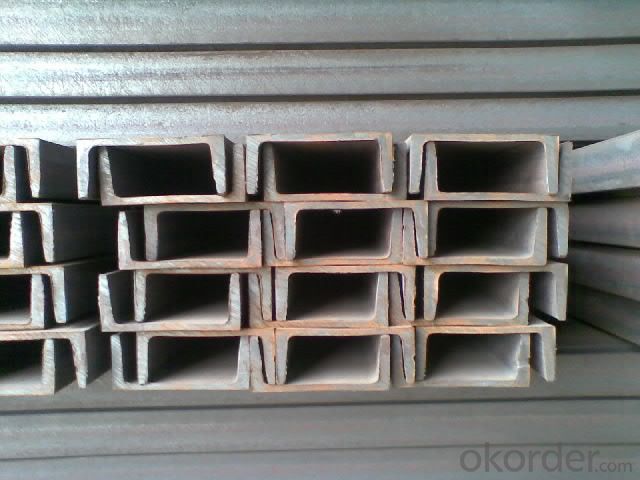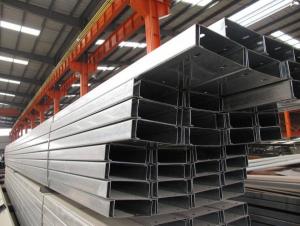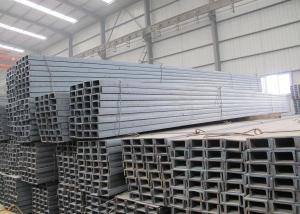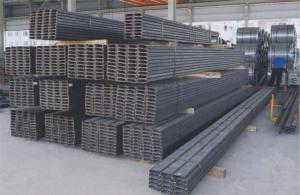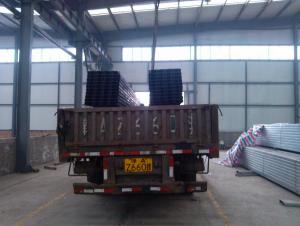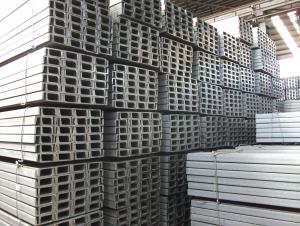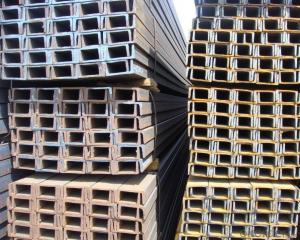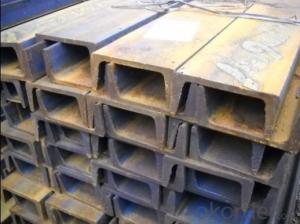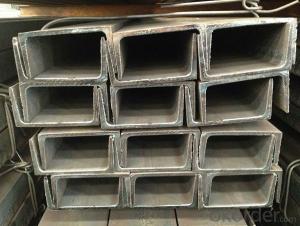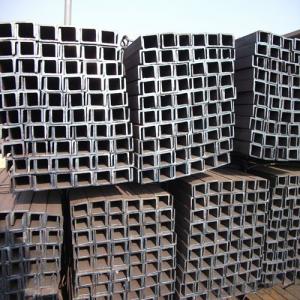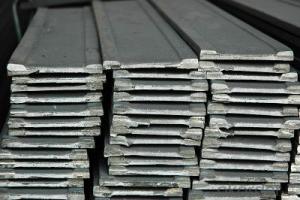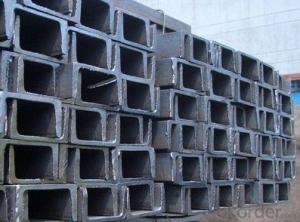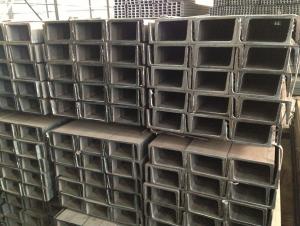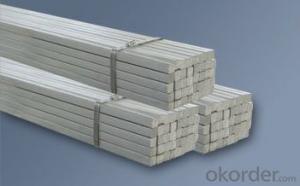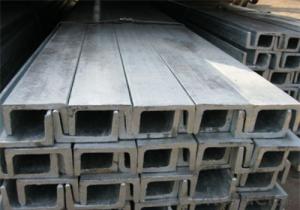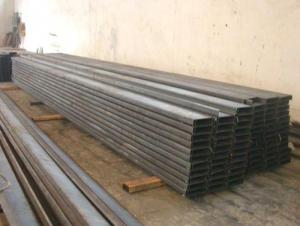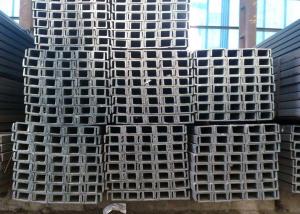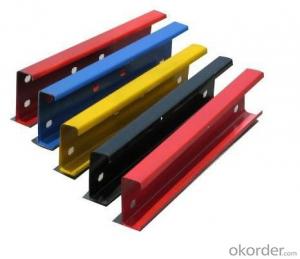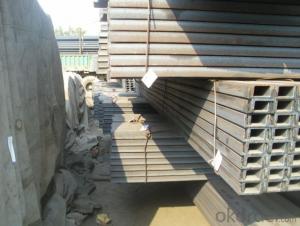Channel Steel Bar U Channel Iron Bar Q235B
- Loading Port:
- Tianjin
- Payment Terms:
- TT or LC
- Min Order Qty:
- 30 m.t.
- Supply Capability:
- 40000 m.t./month
OKorder Service Pledge
OKorder Financial Service
You Might Also Like
Product Description:
OKorder is offering Channel Steel Bar U Channel Iron Bar Q235B at great prices with worldwide shipping. Our supplier is a world-class manufacturer of steel, with our products utilized the world over. OKorder annually supplies products to European, North American and Asian markets. We provide quotations within 24 hours of receiving an inquiry and guarantee competitive prices.
Product Applications:
Channel Steel Bar U Channel Iron Bar Q235B are ideal for structural applications and are widely used in the construction of buildings and bridges, and the manufacturing, petrochemical, and transportation industries.
Product Advantages:
OKorder's Channel Steel Bar U Channel Iron Bar Q235B are durable, strong, and resist corrosion.
Main Product Features:
· Premium quality
· Prompt delivery & seaworthy packing (30 days after receiving deposit)
· Corrosion resistance
· Can be recycled and reused
· Mill test certification
· Professional Service
· Competitive pricing
Product Specifications:
1) Dimensions: 5# ~ 30#
2) Spec.: Q235B, Q345B, SS400, A36, A572, A992 Gr50, S235JRG2, S235JR, S275JR and
S335JR
3) Length: 6 ~ 12m
4) Standard: GB/T707-88, JIS, ASTM and EN
5) We can supply random lengths as per buyers' requirements
Packing: In bundle or bulk
| Size(mm) | Model | Weight(kg/m) |
| 50*37*4.5 | 5# | 5.44 |
| 63*40*4.8 | 6.3# | 6.635 |
| 65*40*4.8 | 6.5# | 6.7 |
| 80*43*5 | 8# | 8.045 |
| 100*48*5.3 | 10# | 10.007 |
| 120*53*5.5 | 12# | 12.37 |
| 140*60*8 | 14#A | 14.53 |
| 140*60*8 | 14#B | 16.73 |
| 160*63*6.5 | 16#A | 17.23 |
| 160*65*8.5 | 16#B | 19.755 |
| 180*68*7 | 18#A | 20.17 |
| 180*70*9 | 18#B | 23 |
| 200*73*7 | 20#A | 22.637 |
| 200*75*9 | 20#B | 25.777 |
| 220*77*7 | 22#A | 24.999 |
| 220*79*9 | 22#B | 28.453 |
| 240*78*7 | 24#A | 26.68 |
| 240*80*9 | 24#B | 30.628 |
| 250*78*7 | 25#A | 27.41 |
| 250*80*9 | 25#B | 31.335 |
| 270*82*7.5 | 27#A | 30.838 |
| 270*84*9.5 | 27#B | 35.077 |
| 280*82*7.5 | 28#A | 31.427 |
| 280*84*9.5 | 28#B | 35.823 |
| 300*85*7.5 | 30#A | 34.463 |
| 300*87*9.5 | 30#B | 39.173 |
| 320*88*8 | 32#A | 38.083 |
| 320*90*10 | 32#B | 43.107 |
| 360*96*9 | 36#A | 47.814 |
| 360*98*11 | 36#B | 53.466 |
| 400*100*10.5 | 40#A | 58.928 |
| 400*102*12.5 | 40#B | 65.208 |
FAQ:
Q1: Why buy Materials & Equipment from OKorder.com?
A1: All products offered byOKorder.com are carefully selected from China's most reliable manufacturing enterprises. Through its ISO certifications, OKorder.com adheres to the highest standards and a commitment to supply chain safety and customer satisfaction.
Q2: How do we guarantee the quality of our products?
A2: We have established an advanced quality management system which conducts strict quality tests at every step, from raw materials to the final product. At the same time, we provide extensive follow-up service assurances as required.
Q3: How soon can we receive the product after purchase?
A3: Within three days of placing an order, we will begin production. The specific shipping date is dependent upon international and government factors, but is typically 7 to 10 workdays.
Images:
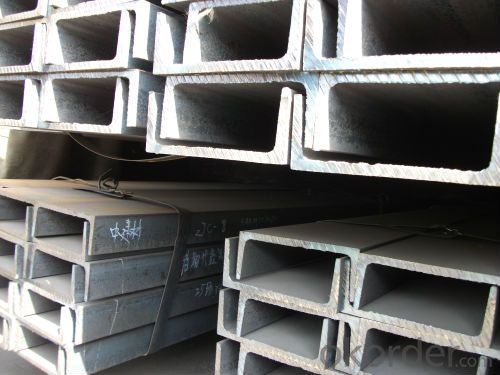
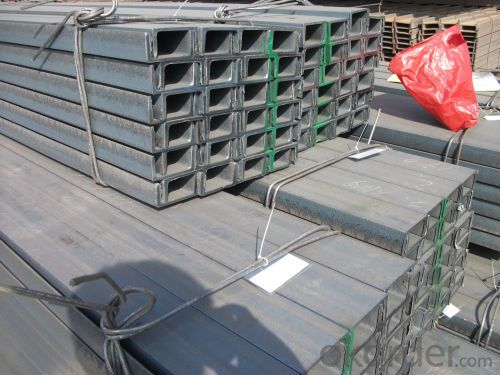
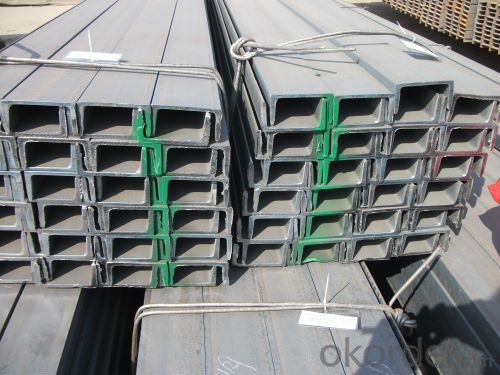
- Q: How do steel channels contribute to the overall accessibility of a structure?
- Steel channels contribute to the overall accessibility of a structure by providing structural support and flexibility in design. They can be used to create ramps, staircases, and walkways, allowing for easy movement and navigation within the building. Additionally, steel channels are also utilized in the construction of elevators and escalators, further enhancing accessibility for individuals with mobility challenges.
- Q: What are the different methods of surface finishing for steel channels?
- There are several methods of surface finishing available for steel channels, each with its own unique benefits and applications. Some of the most common methods include: 1. Painting: Painting is a widely used method for surface finishing steel channels. It provides an aesthetically pleasing finish and protects the steel from corrosion and other environmental factors. Different types of paints can be used, such as epoxy, polyurethane, or enamel, depending on the specific requirements of the application. 2. Galvanizing: Galvanizing is a process that involves coating steel channels with a layer of zinc. This method provides excellent corrosion resistance, making it suitable for outdoor or harsh environments. Hot-dip galvanizing and electroplating are two commonly used techniques for galvanizing steel channels. 3. Powder coating: Powder coating is a dry finishing process where a powdered paint is electrostatically applied to the surface of steel channels. The coated channels are then heated to fuse the powder into a smooth and durable finish. Powder coating offers a wide range of color options, excellent resistance to chipping, and high durability. 4. Anodizing: Anodizing is typically used for aluminum, but it can also be used for steel channels. It involves creating an oxide layer on the surface of the steel through an electrochemical process. Anodized steel channels have enhanced corrosion resistance and can be dyed in various colors. 5. Plating: Plating is a technique that involves depositing a thin layer of metal, such as chrome, nickel, or zinc, onto the surface of steel channels. This method provides aesthetic appeal, improved corrosion resistance, and can also enhance hardness or lubricity. 6. Polishing: Polishing is a mechanical process that involves using abrasives to create a smooth and shiny surface on steel channels. This method is often used for decorative purposes or to improve the visual appearance of stainless steel channels. Each method of surface finishing has its own advantages and considerations, and the choice depends on factors such as aesthetic requirements, corrosion resistance, durability, and cost-effectiveness. It is important to consider the specific application and consult with professionals to determine the most suitable surface finishing method for steel channels.
- Q: Can steel channels be customized to specific lengths?
- Yes, steel channels can be customized to specific lengths.
- Q: Can steel channels be used for elevator shafts?
- Yes, steel channels can be used for elevator shafts. Steel channels, which are structural components made of steel in a "C" shape, are commonly used in construction for various purposes, including elevator shafts. Steel channels provide strength, stability, and support to the elevator shaft structure, ensuring its ability to withstand the weight and load of the elevator car, as well as any additional loads such as people or heavy equipment. Additionally, steel channels can be easily fabricated and customized to fit the specific requirements of the elevator shaft, making them a suitable choice for this application.
- Q: Difference between steel channel and channel steel!
- It shouldn't make any difference, but I'm not sure.
- Q: What are the different methods of joining steel channels together?
- Steel channels can be joined together using various methods, each with its own advantages and limitations. Welding is a commonly used technique that involves melting and fusing the edges of the channels. While it creates a strong and durable joint, it requires skilled welders and specialized equipment. Welding techniques, such as arc welding, MIG welding, TIG welding, or spot welding, can be employed depending on the specific requirements. Alternatively, bolting can be used by connecting the channels using bolts and nuts. This method is relatively simple and allows for easy disassembly and adjustments, making it suitable for applications that require flexibility. However, it may not offer the same level of strength as welding, and additional reinforcement might be necessary in high-stress situations. Riveting is another option, which involves using metal fasteners called rivets to join the channels. Although it has been widely used in the past, it is less common nowadays due to the availability of more efficient joining techniques. Riveting can provide a strong joint, but it requires special tools and skills for proper installation. Adhesive bonding is a method that utilizes specialized adhesives to join the channels together. It offers several advantages, including non-invasiveness, a smooth finish, and even stress distribution across the joint. Adhesive bonding can be a suitable option when other methods are impractical or undesirable. Ultimately, the choice of joining method for steel channels depends on factors such as application requirements, desired strength and durability, available resources, and the expertise of personnel involved. Careful evaluation of these factors and consultation with professionals is crucial for determining the most appropriate method for a specific project.
- Q: Are steel channels suitable for coastal applications?
- Indeed, steel channels prove to be a fitting choice for coastal applications. Given their resilience and ability to resist corrosion, steel channels are widely utilized in coastal regions. The coastal environment presents distinct challenges, including elevated moisture levels, exposure to saltwater, and formidable winds, all of which hasten material decay. Nevertheless, steel channels are purposefully designed to withstand these conditions. Typically crafted from stainless steel or galvanized steel, they possess a protective layer that deters rust and corrosion. Additionally, steel channels boast exceptional strength and structural integrity, rendering them an apt choice for coastal applications such as seawalls, docks, piers, and various other marine infrastructure projects.
- Q: Are steel channels suitable for marine applications?
- Yes, steel channels are suitable for marine applications. Steel channels are made from a strong and durable material that is resistant to corrosion, making them ideal for marine environments where there is constant exposure to saltwater. They can withstand the harsh conditions of the ocean, including high levels of moisture, waves, and wind. Additionally, steel channels offer excellent structural integrity and can provide support and stability for various marine structures such as piers, docks, and offshore platforms. They are also commonly used in shipbuilding and the construction of marine vessels. Overall, steel channels are a reliable and practical choice for marine applications due to their strength, corrosion resistance, and ability to withstand the demanding conditions of the marine environment.
- Q: Can steel channels be used for platform stairs?
- Yes, steel channels can be used for platform stairs. Steel channels are often used in construction for their strength and durability. They provide excellent structural support, making them suitable for stairs and platforms, especially in industrial or commercial settings where heavy loads and frequent use are expected. Steel channels can be easily fabricated and welded to create a sturdy and reliable staircase. Additionally, they can be customized to meet specific design requirements, such as the desired height, width, and angle of the stairs. Overall, steel channels are a popular choice for platform stairs due to their strength, versatility, and ability to withstand heavy foot traffic.
- Q: What are the different methods for transporting and handling steel channels?
- There are several different methods for transporting and handling steel channels, depending on the specific requirements and logistics of the situation. Some of the commonly used methods include: 1. Crane lifting: Steel channels can be transported and lifted using cranes equipped with hooks or lifting magnets. This method is ideal for large-scale projects or when handling heavy steel channels. 2. Forklifts: Forklifts with specialized attachments can be used to transport steel channels within a facility or construction site. This method is suitable for smaller and lighter steel channels, allowing for more precise movement and placement. 3. Conveyor systems: In manufacturing settings, conveyor systems can be implemented to transport steel channels from one process to another. This method is efficient and reduces the need for manual handling. 4. Flatbed trucks: Steel channels can be loaded onto flatbed trucks for transportation over long distances. The channels are secured using straps or chains to prevent movement during transit. 5. Palletizing: Steel channels can be stacked and secured on pallets for easier handling and transportation. This method is common when shipping smaller quantities of steel channels or for storing them in a warehouse. 6. Rollers or skids: Steel channels can be moved along rollers or skids for short distances within a facility or construction site. This method allows for easy movement and positioning of the channels. 7. Rail transportation: For larger quantities or longer distances, steel channels can be transported via rail. Specialized rail cars or containers are used to safely secure and transport the channels. It is important to consider the size, weight, and fragility of the steel channels when determining the appropriate method for transporting and handling them. Safety measures should always be followed to prevent accidents, and specific equipment may be needed depending on the chosen method.
Send your message to us
Channel Steel Bar U Channel Iron Bar Q235B
- Loading Port:
- Tianjin
- Payment Terms:
- TT or LC
- Min Order Qty:
- 30 m.t.
- Supply Capability:
- 40000 m.t./month
OKorder Service Pledge
OKorder Financial Service
Similar products
Hot products
Hot Searches
Related keywords
